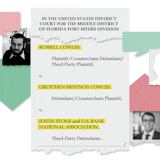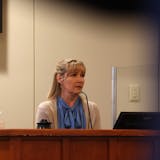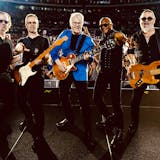They were born nearly 25 years and 400 miles apart in different pockets of the Midwest. But when Leslie Park and Edward Baker came together in Minneapolis more than 60 years ago, they changed the face of downtown — creating the city's first skyways.
The son of a general store merchant, Park was born in 1901 in Balsam Lake, a northwestern Wisconsin town of a few hundred. Baker was born in 1926 in bustling Chicago, the son of a Russian-born Jewish traveling salesman.
Park moved from Wisconsin to Minneapolis in the 1920s and eclipsed his father's business success back in Balsam Lake. By the early 1960s, he had emerged as a major downtown real estate developer and forged a partnership with Baker, an architect who had moved as a boy with his family to Minneapolis in 1932, graduating from West High School and the University of Minnesota.
Today Park and Baker are considered the fathers of Minneapolis' skyway system — downtown's nearly 10-mile human hamster maze response to the climate-controlled suburban malls that first sprang up in the 1950s.
As the pandemic casts doubt about the future viability of workaday downtowns, it's fitting to flash back to this pair of downtown boosters who spawned the largest contiguous system of enclosed second-story bridges in the world.
When Southdale in Edina became the nation's first indoor mall in 1956, Park grew worried. The year before, General Mills had bailed out as one of downtown Minneapolis' major employers, relocating to a new campus in Golden Valley. "He knew that downtown had to compete with the suburbs … or go down the tube," Baker said later.
So Park began touting covered walkways to try to offset the weatherproof advantages of suburban malls, despite concerns they would dampen street-level commerce. Baker's sketches turned Park's idea into glass-and-steel reality in 1962: a pedestrian bridge spanning Marquette Avenue, connecting Park's new Northstar Center development with Northwestern National Bank across the street.
"Leslie Park was more so the designer/visionary and Baker was the one who executed the projects," said Katie Thornton, a Minneapolis historian and Fulbright-National Geographic digital storytelling fellow. Her 47-minute podcast explores the good, the bad and the ugly of skyways (99percentinvisible.org/episode/beneath-the-skyway).



